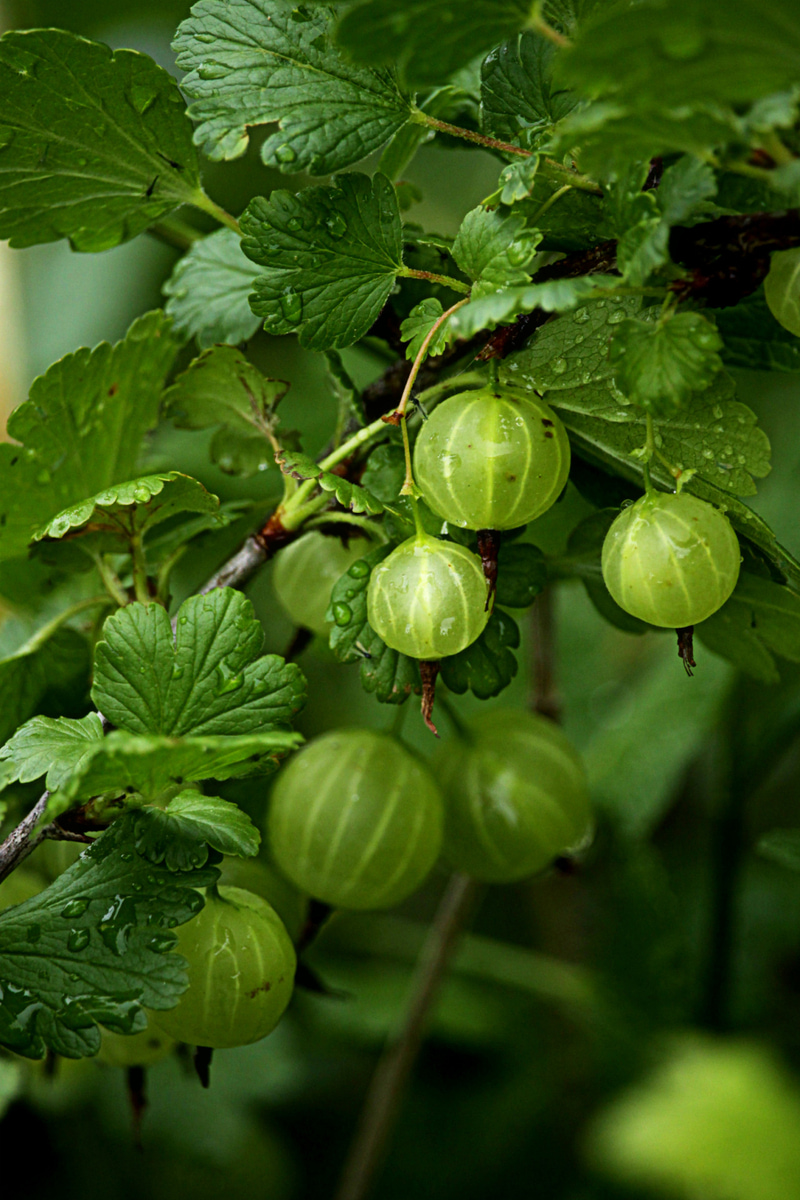Gooseberry: how to grow this delicious fruit in your garden
Gooseberries are the edible fruit produced from gooseberry bushes. These berries are derived mostly from two species: the European gooseberry and the American gooseberry.
These fruits come in a variety of colors including yellow, green, red, purple, and even black. The darker the color, the sweeter the berry. They’re similar in size and flavor to grapes with a translucent skin, and a juicy interior filled with many small seeds at the center.
The flavor of gooseberries depends on how ripe they are, with green gooseberries being more sour and red/purple gooseberries being more sweet. Most describe them as similar in taste and texture to grapes, but more acidic.
9 Fruits, Vegetables, and Herbs to Consider Growing in Your Garden

Gooseberry Health Benefits
In addition to their bright and juicy flavor, gooseberries offer an array of health benefits. Gooseberries are extremely low in calories and fat, but high in nutrients like copper, manganese, potassium, and vitamins C, B5, and B6. They are also rich in dietary fiber and antioxidants. However, it’s important to remember when cooking with gooseberries that some nutrients will be destroyed during the cooking process.
How to grow gooseberries
Cultivation
Gooseberries aren’t too fussy about situation. They love a sunny position, but will also grow and fruit very well in shade and other awkward positions in the garden. They will also tolerate a more exposed position than most other soft fruit.
They need a moist, but free-draining soil that doesn’t become waterlogged in winter. It will pay dividends to improve the structure of all soils by adding lots of organic matter, such as compost or soil improver. This is particularly the case with clay soils, where it will improve drainage, and on light sandy soils, where it will increase its moisture-holding capacity.

Gooseberry varieties
Gooseberries are divided into cooking and dessert varieties, although most are dual purpose and all taste sweeter when left to fully ripen on the plant. The fruit is also available in four different colours – green, red, white and yellow. The following are all good dessert varieties, except Careless, which needs cooking.
Physalis – an exotic fruit wrapped in orange paper lanterns
Planting gooseberries
Plant bare-root gooseberry bushes in winter. November or December are best, although it can be done right up to the end of February, whenever the soil isn’t frozen solid or waterlogged. Container-grown bushes can be planted at just about any time of year.
Gooseberry bushes should be planted around 1.5m apart. They fruit on older wood and on the base of young wood, and can even be trained into cordons and fans against walls or fences if space is tight.
Dig a hole 60x60cm and 30cm deep. Add a layer of organic matter into the base of the hole and dig in. Place the roots of the gooseberry bush in the planting hole at the same depth as they were originally growing, so that the old soil mark is at soil level.
Now mix in more soil improver to the soil and fill in the planting hole. Add a general granular plant food and water in well. Finally, add a 5cm (2in) deep mulch of well rotted garden compost, bark or other bulky organic material around the root area.

Container growing
Gooseberries grow and crop perfectly well in a large pot or other container. You will need a pot of at least 30-38cm in diameter, filled with a good quality potting compost. Obviously, plants in containers will need regular watering and feeding throughout the growing season to ensure good results and a large crop.
How to care for gooseberries
Water the newly planted bushes during the first year if the weather is dry. In subsequent years, watering when the fruit is swelling may be needed if the soil is not already moist.
For maximum crops, feed each year in March with a suitable granular plant food, and top up the mulch to retain soil moisture at the roots.
Prune annually between late autumn and late winter, cutting back new growth to two buds and main shoots (leaders) by one-third. Pruning new growth to 5 leaves in summer will also encourage a bigger crop the following year.
Covering plants with netting will protect the fruit from birds and may also help prevent damage from gooseberry sawfly caterpillars.

How can you grow mango yourself in your garden? Instructions for growing this amazing tropical tree
Harvesting
A few weeks before they are ripe, remove alternate fruit and use them for cooking. Leave the remaining fruit to ripen on the plant, but don’t leave them until they become too soft. The fruit tastes delicious straight from the bush, but it can also be frozen. You can expect a yield of about 5kg (11lb) from each gooseberry bush.




































